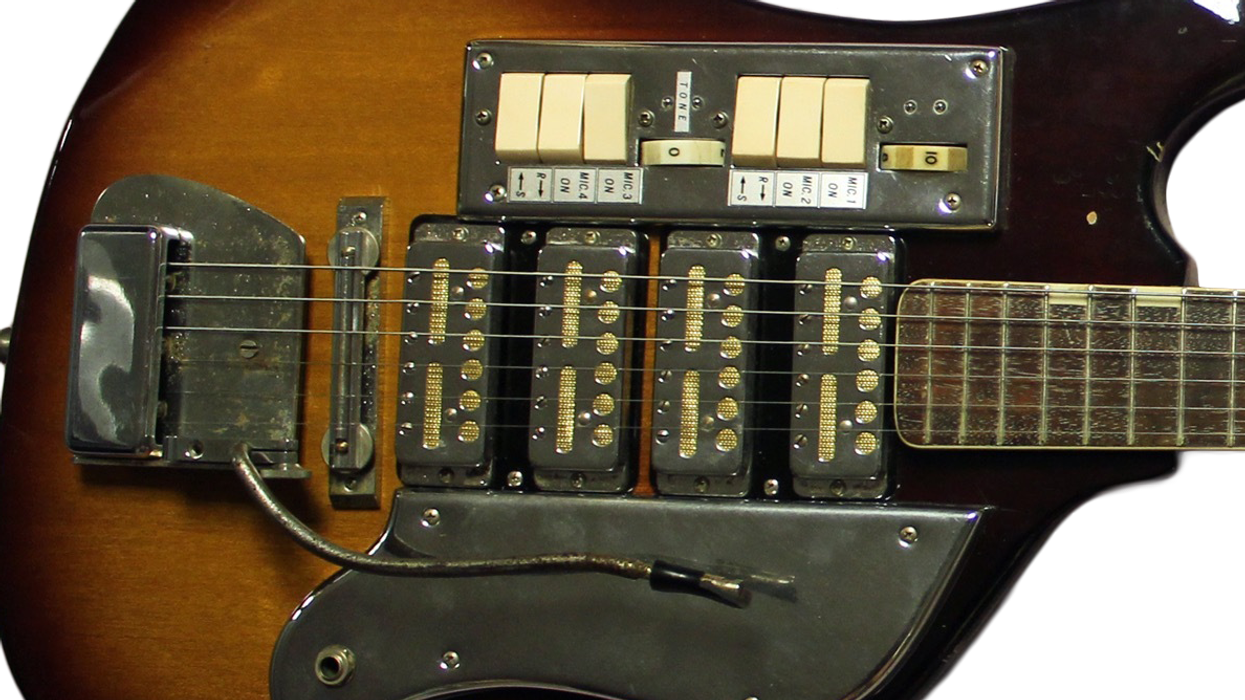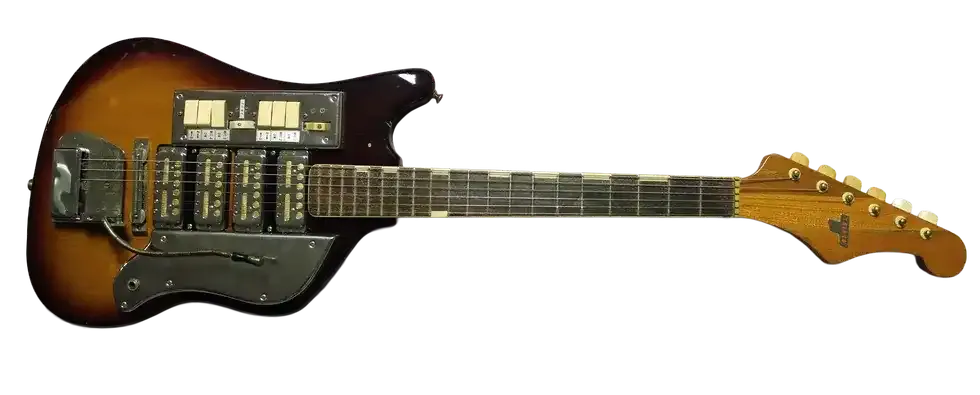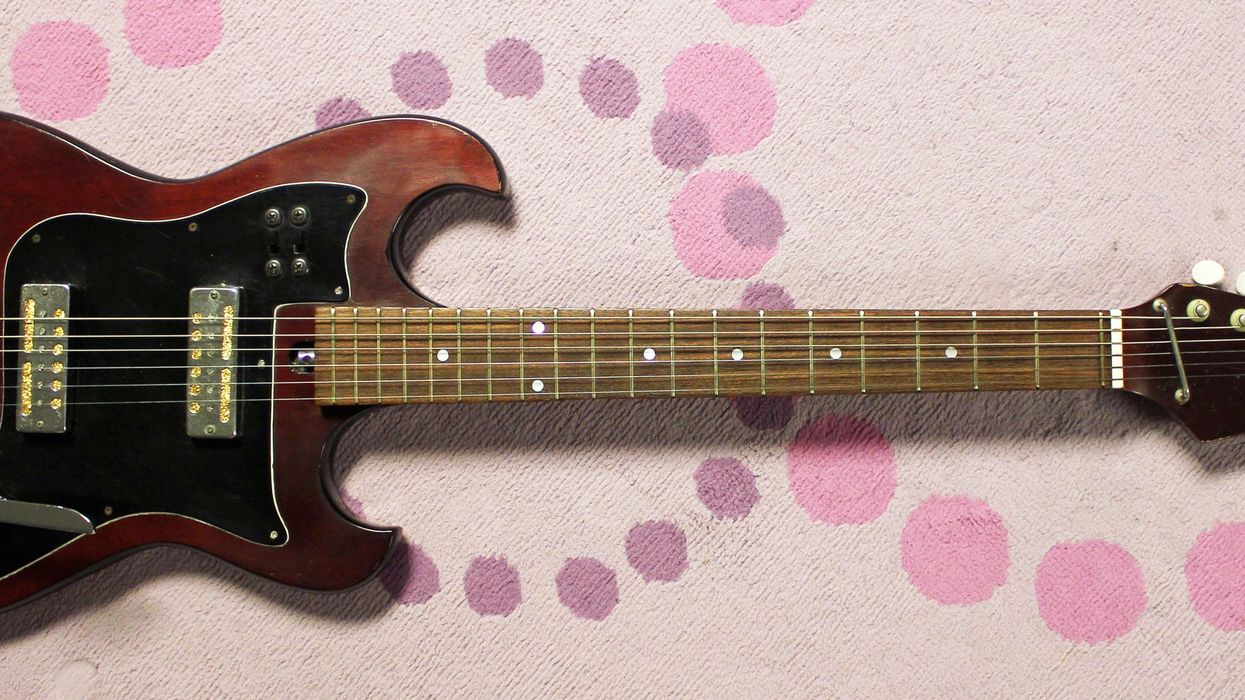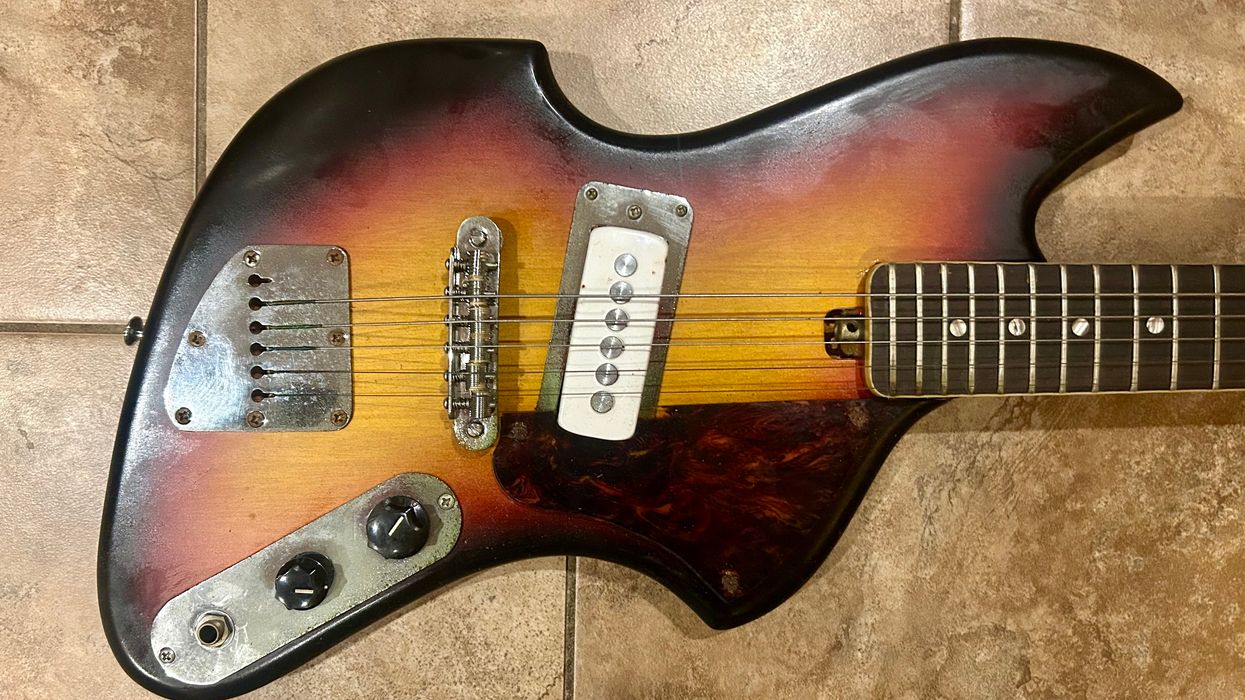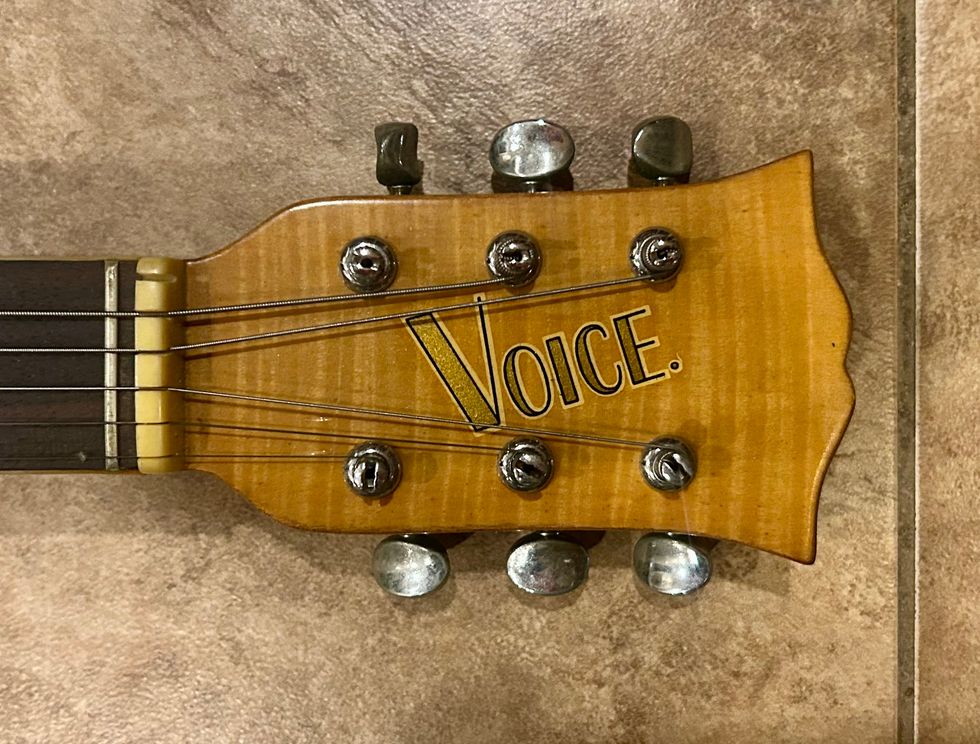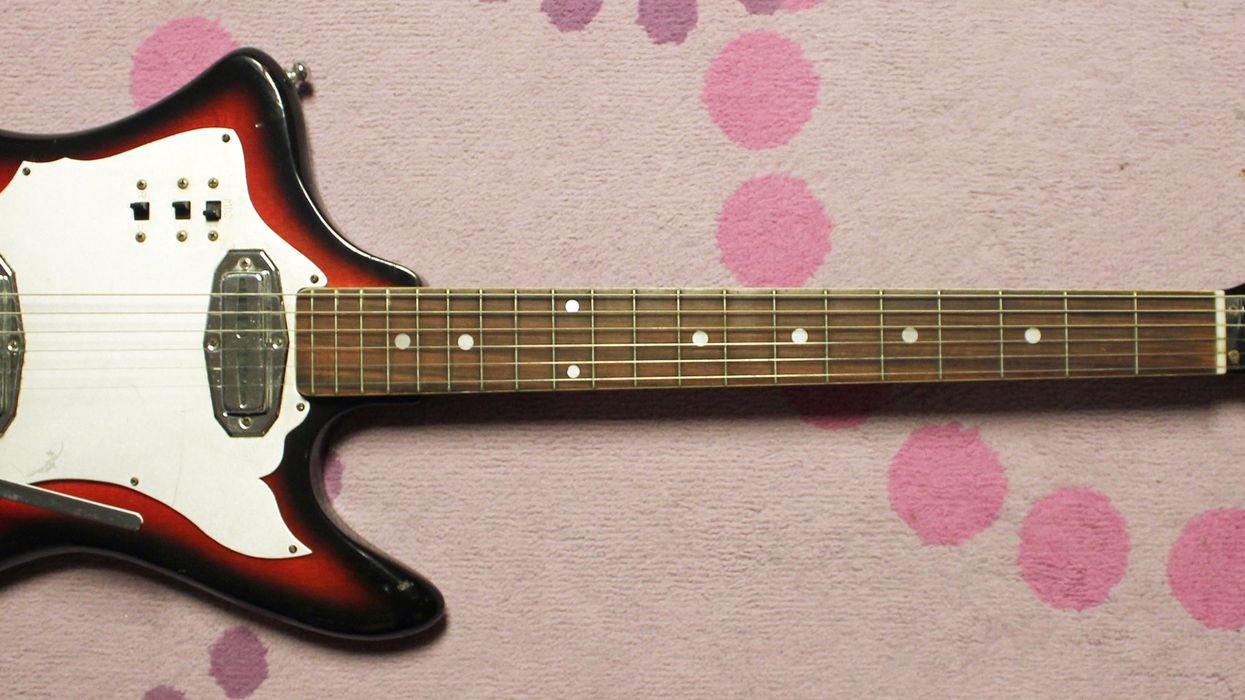Football is certainly a game of attrition. The team started out with around 60 players, and now that number ranges from 40 to 50, depending on the week and amount of injuries sustained. I think I passed along some of my caveman sensibilities to the boy, but thankfully my wife passed on her smarts, so he’s not a total meathead like me. However, the arrival of football season has got me thinking about breaking things (I’m really good at accidentally damaging stuff) and how I feel about guitars.
I’ve mentioned many times before how I avoid guitars that are mint, for fear of finish damage, and guitars that have overly complex features that I might accidentally destroy. There’s also a third category I try to avoid: fragile guitars. So for this column, I’m going to examine a guitar I truly thought I would crush: the Yamaha SA-15D.
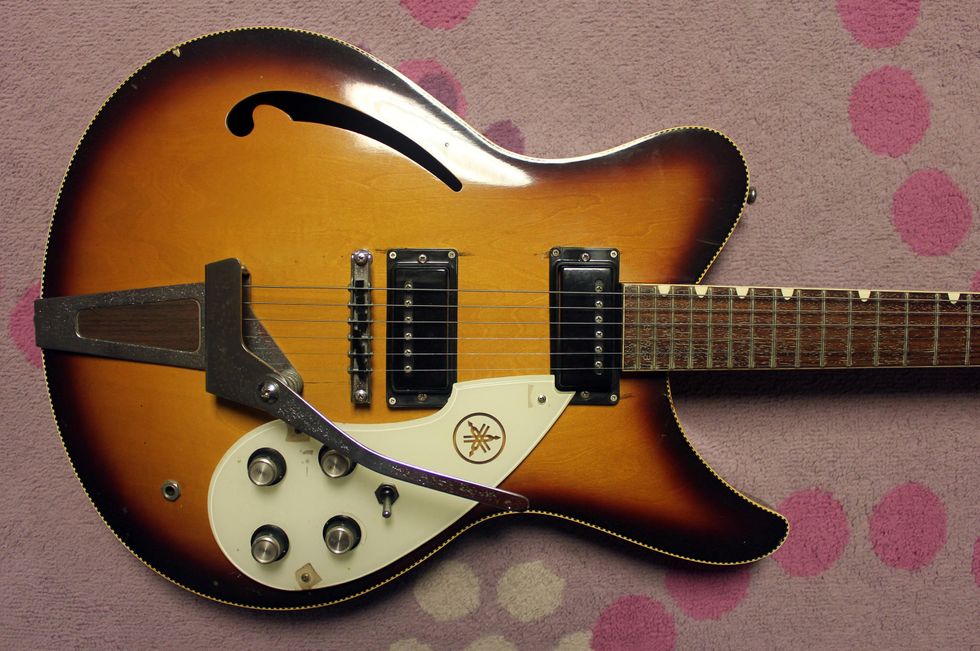
In a strange design choice, the pickguard on the Yamaha SA-15D is raised off of the body on foam-like spacers.
There were two types of SA-15s in 1969: the SA-15 and the SA-15D. They were both basically gone from the Yamaha catalogs by 1970. The SA-15D guitars featured celluloid neck binding, side fret-position markers, and black-and-white checkerboard-pattern binding on the body. The SA-15 was simply more plain with regular ol’ circular fretboard dots. The guitars were aesthetically beautiful, with elongated, sweeping lower horns that were accented by a flowing pickguard and soundhole. Totally cool, and in typical Yamaha fashion, no corner-cutting. Basically, all the early Yahama guitars were over-engineered and everything from the pickups to the tremolo to the bridge were all in-house designs and exclusive to the late 1960s era.
The pickups were described as being “noise-free” and “high-sensitivity,” and, of course, they sorta deliver. Yamahas almost always have great-sounding pickups, and in playing my own SA-15D, I discovered that these units are no slouches, but they are a little noisy at the extreme settings. The pickups are single-coils featuring anisotropic ferrite magnets. (Look that up if you want an education in magnetism!) To my ear, the pickups sound a bit more chunky and full than other single-coils, and this model does have a warmth to its sound that I very much like. The electronics feature your typical 3-way switch and volume/tone knobs for each pickup.
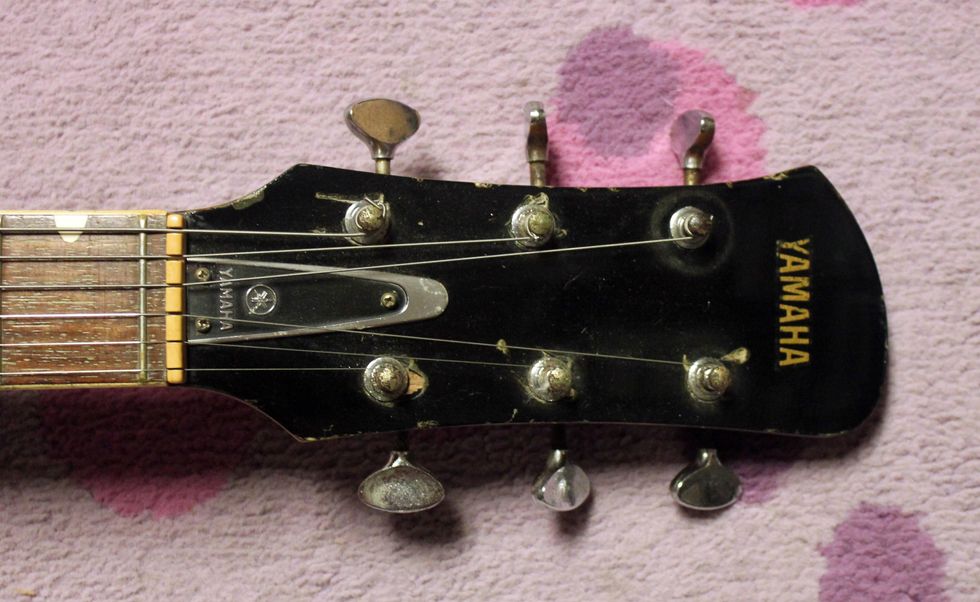
At least the headstock seems solid!
The scale is 23¾", like a Gibson, with 22 frets and a zero fret. These SA-15Ds are super light and that’s the first reason I was wary. The construction is superb and I don’t really think I could crush one of these, but they are so well-balanced and featherweight that it almost felt like the guitar had fallen off the strap! Seriously.
The biggest concern I had when I got the guitar was the pickguard. See, it’s raised off the body with little foam-like spacers, and the knobs and switch are mounted on the raised pickguard. It really spooked me! It was a rare Yamaha design mishap that might have led to the demise of the model. Who knows, but it is kind of a shame since the guitars play so well and sound so good. But soon, I started to notice how the foam seemed to be chemically reacting to the white pickguard, further weakening the already troubled area. So, alas, just like football and attrition, the same can be said for guitar collections. It’s a long season, peeps!


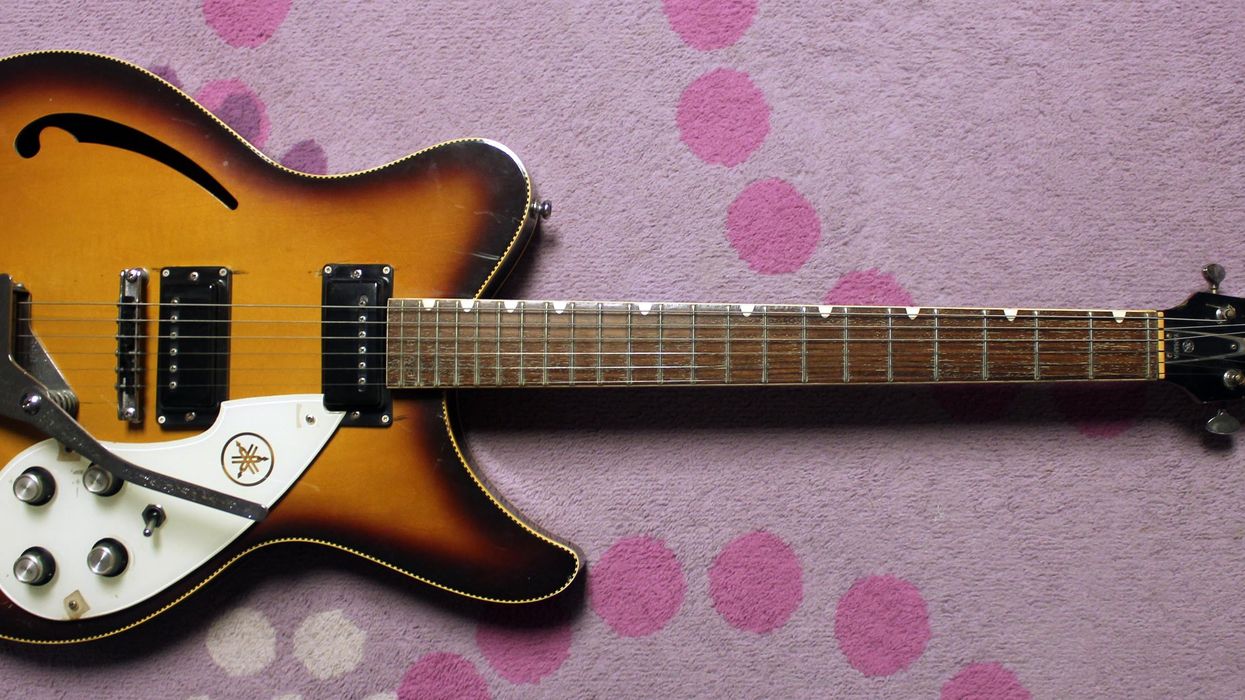


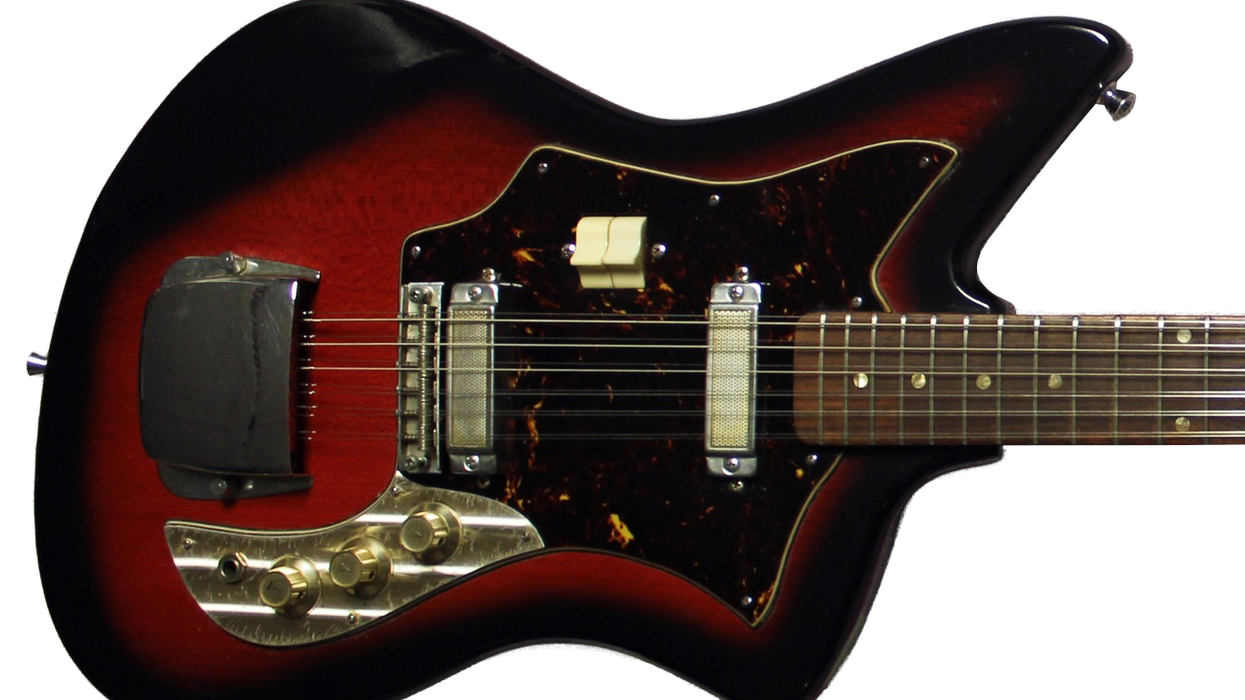
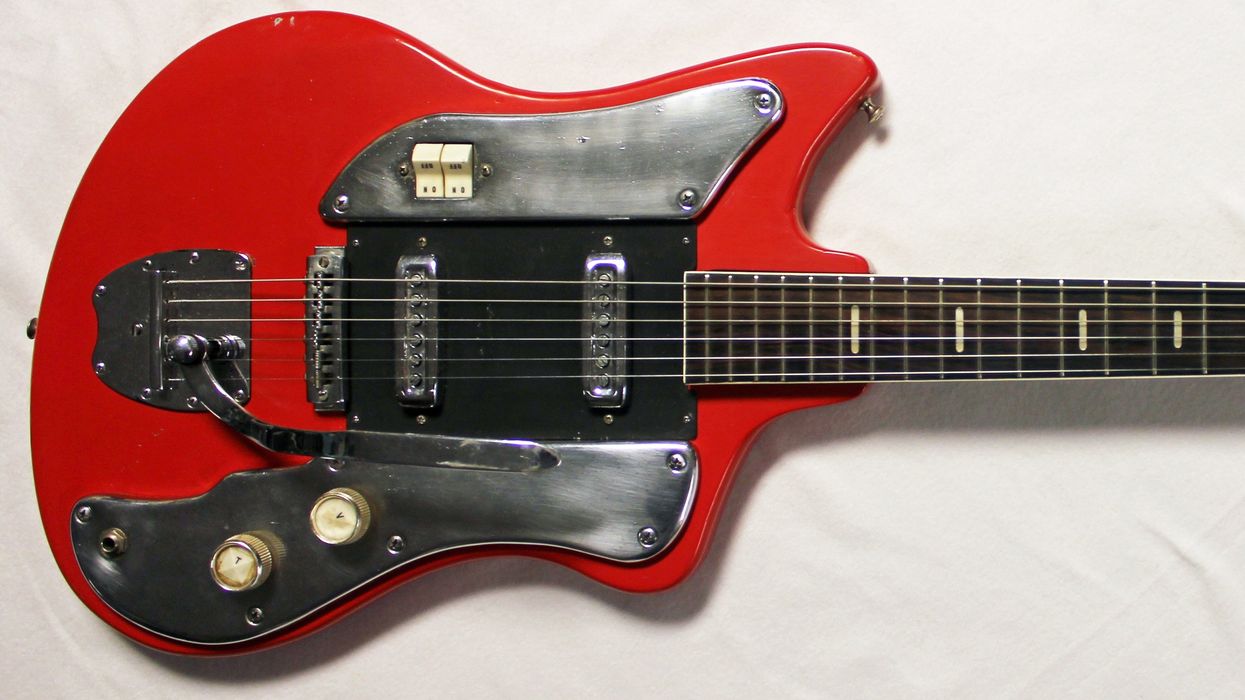
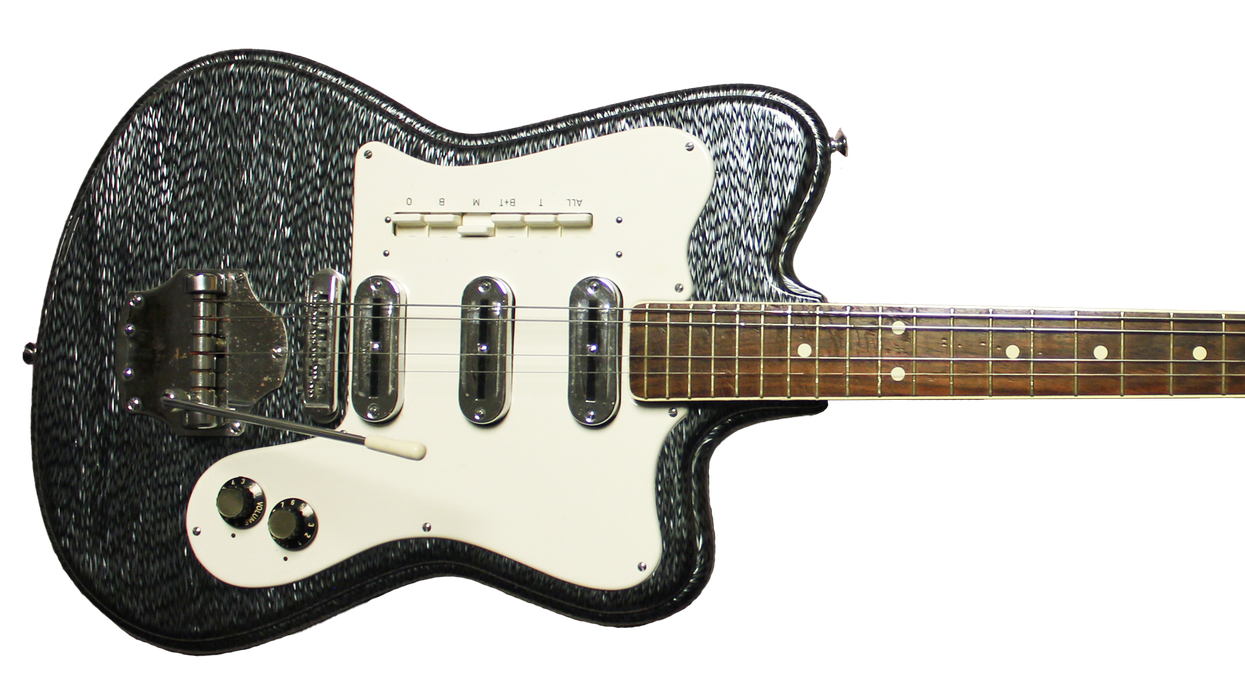
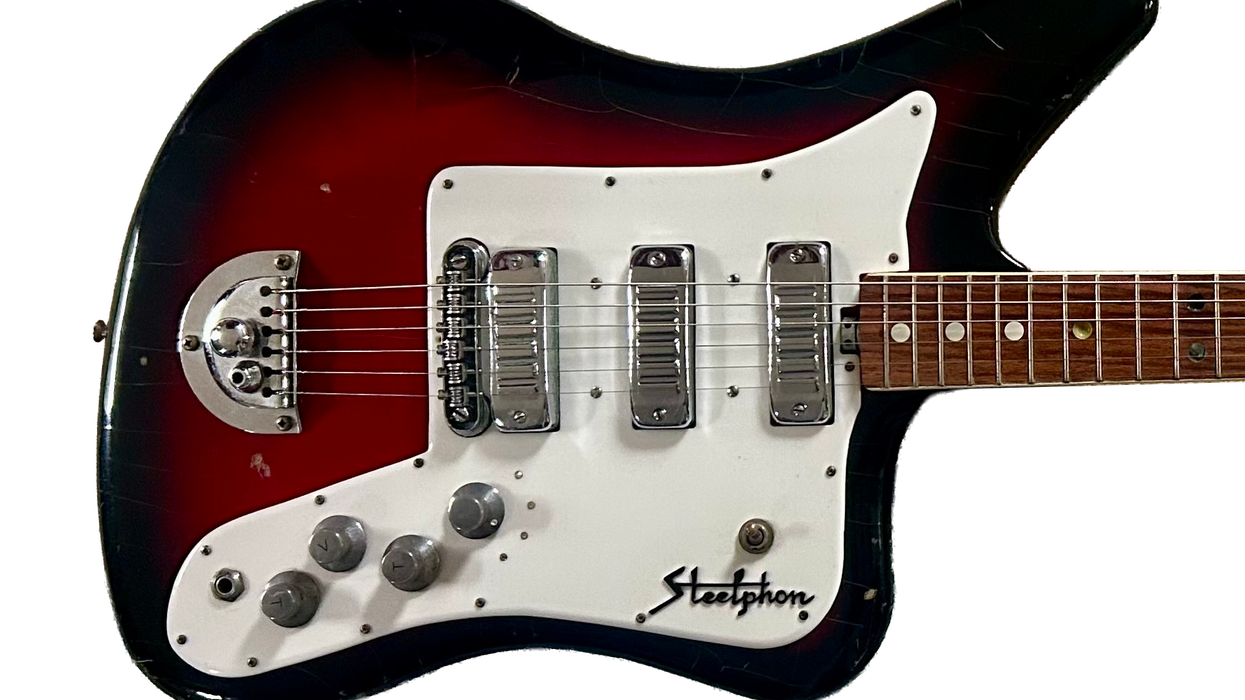
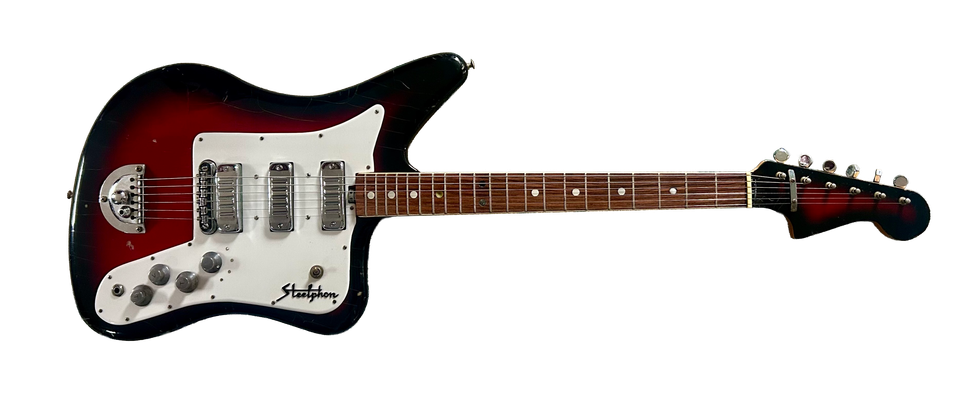 Then, in the dream, I “awoke” and realized I was back in my bedroom, and it was all just a dream. The kicker is that I was still dreaming, because that “paddle” guitar was suddenly in my hands—then I woke up for real! How about that misadventure?
Then, in the dream, I “awoke” and realized I was back in my bedroom, and it was all just a dream. The kicker is that I was still dreaming, because that “paddle” guitar was suddenly in my hands—then I woke up for real! How about that misadventure?


![Rig Rundown: Russian Circles’ Mike Sullivan [2025]](https://www.premierguitar.com/media-library/youtube.jpg?id=62303631&width=1245&height=700&quality=70&coordinates=0%2C0%2C0%2C0)


